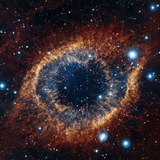Astronomy/Astrophysics
23 Mar 2025 05:46
That is also a part of
"Classical Mechanics"
Читать полностью…
Astronomy/Astrophysics
23 Oct 2024 19:52
So here's how it is done applying greens second identity:
Let's start with poisson's equation:
We know that the electrostatic potential V(r) satisfies Poisson's equation:
∇²V(r) = -ρ(r)/ε₀
And greens second identity which is stated as:
∭(u∇²v - v∇²u) dV = ∬(u∇v - v∇u) ⋅ dS
Now let u = V(r') and v = 1/R = 1/|r - r'|
Then ∇²v = ∇²(1/R) = -4πδ³(r - r') (This is immediately obvious from the Laplacian of the inverse distance function, where δ³(r - r') is the Dirac delta function).
And ∇²u = ∇'²V(r') = -ρ'(r')/ε₀ (from Poisson's equation)
Plugging these into Green's identity:
∭(V(r')∇'²(1/R) - (1/R)∇'²V(r')) dV = ∬(V(r')∇'(1/R) - (1/R)∇'V(r')) ⋅ dS
∭(V(r')(-4πδ³(r - r')) - (1/R)(-ρ'(r')/ε₀)) dV = -4πV(r) + ∭(ρ(r')/ε₀R) dV
Rearrange and Solve for V(r):
V(r) = -1/4π∬(V(r')∇'(1/R) - (1/R)∇'V(r')) ⋅ dS + 1/4π∭(ρ'(r')/ε₀R) dV
using the fact that ε₀ = 1/(4πk), and generalizing ρ'(r')/4πε₀R = ρ(r')/R we get the desired result:
V(r) = ∭(ρ(r')/R) dV + (1/4π)∬((1/R)∇'V(r') - V(r')∇'(1/R)) ⋅ dS
The volume integral represents the potential due to the charge distribution throughout the volume.
The surface integral accounts for the potential due to any charges on the surface of the region.
Читать полностью…
Astronomy/Astrophysics
23 Oct 2024 08:50
that's tough!!!!!!!!
Читать полностью…
Astronomy/Astrophysics
22 Oct 2024 09:29
Ok I will try it, thanks
Читать полностью…
Astronomy/Astrophysics
22 Oct 2024 07:32
in my opinion it should be written as V(r), potential being a function of position vector not of its first derivative (if prime notation isn't used for field points as used by Griffiths).
Читать полностью…
Astronomy/Astrophysics
22 Oct 2024 06:40
Oh yeh so we can derive the expression using greens identity?
Читать полностью…
Astronomy/Astrophysics
22 Oct 2024 06:38
No it is our instructor who made it up, I didn't even see the equation from any ED book. The teacher just come up with it and ask us to derive it😅
Читать полностью…
Astronomy/Astrophysics
22 Oct 2024 06:19
This "g" is actually Green's function lol.
Читать полностью…
Astronomy/Astrophysics
22 Oct 2024 05:48
here is the LaTeX version 😉
Читать полностью…
Astronomy/Astrophysics
22 Oct 2024 05:35
If you made-up it on your own then it's wrong ig (in terms of formulation), "F = V'(x)" is one-dimensional case while you're using V(r') down there so why not V(x') there too or using "r" everywhere ?
Читать полностью…
Astronomy/Astrophysics
22 Oct 2024 00:25
Astrophysical Journal in the news
Betelgeuse Betelgeuse? Bright star Betelgeuse likely has a 'Betelbuddy' stellar companion
One of the brightest stars in the night sky, Betelgeuse, may not be on the brink of exploding as a supernova, according to a new study of the star's brightening and dimming. Instead, recent research shows that the observed pulsing of the starlight is probably caused by an unseen companion star orbiting Betelgeuse.
Читать полностью…
Astronomy/Astrophysics
21 Oct 2024 21:58
can anybody describe me this ( i am not even getting a single clue on what to do)
Читать полностью…
Astronomy/Astrophysics
21 Oct 2024 20:34
that's just a theory every unique shape has its own name
the spherical spere you're talking about is the most accepted one till now, but there are some other speculations too you know
Читать полностью…
Astronomy/Astrophysics
21 Oct 2024 19:53
This theory can be better linked with Hawking radiation (which is not yet proven and also this theory violates the mass energy equivalence law for a short period of time)
Читать полностью…
Astronomy/Astrophysics
21 Oct 2024 19:49
Wow that a fascinating idea Im also thinking that everything in this universe is made up of same thing with different manifestation just like an atom having proton electron and neutron and only the numbers and composition changes the property of every elements
Читать полностью…

 3984
3984